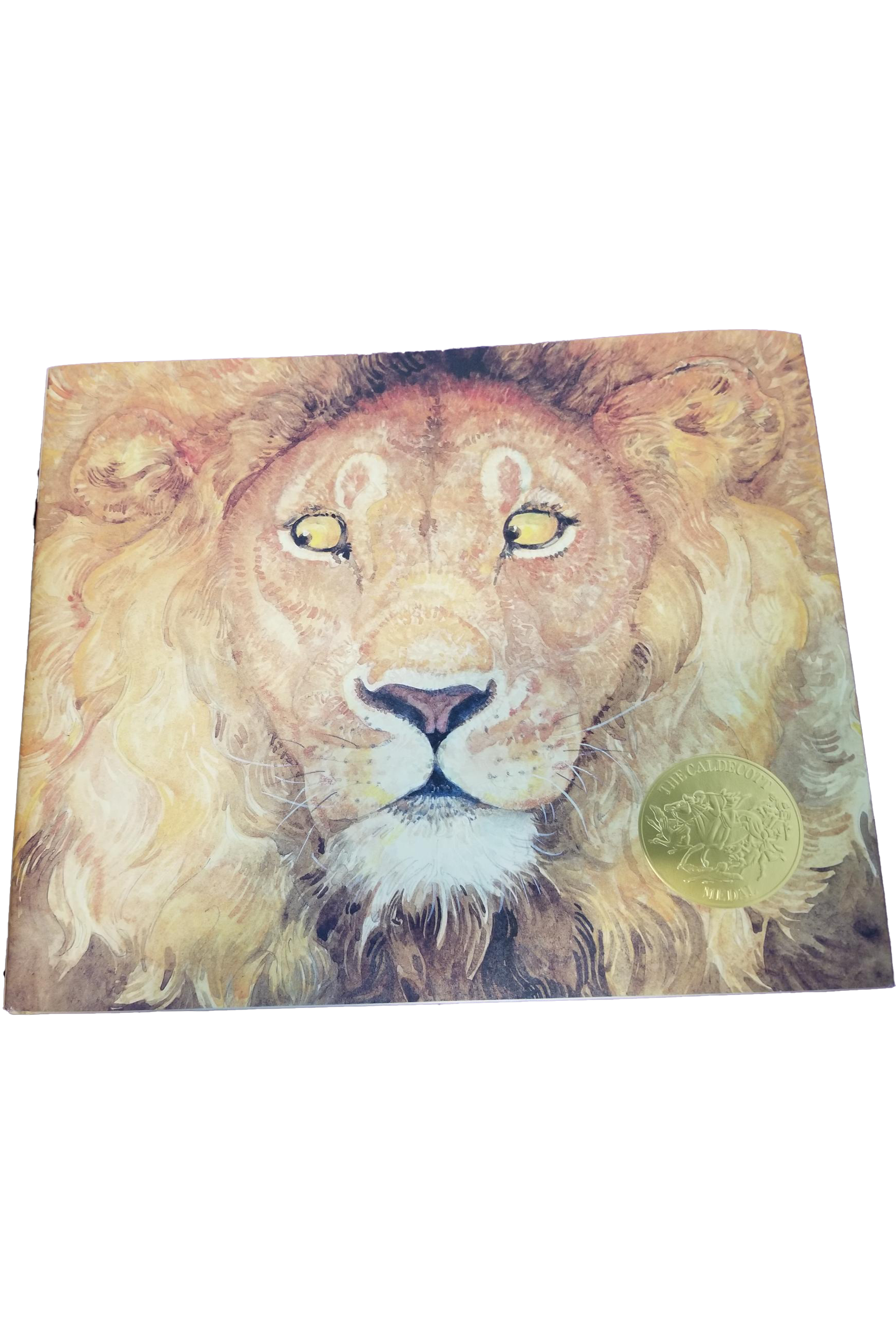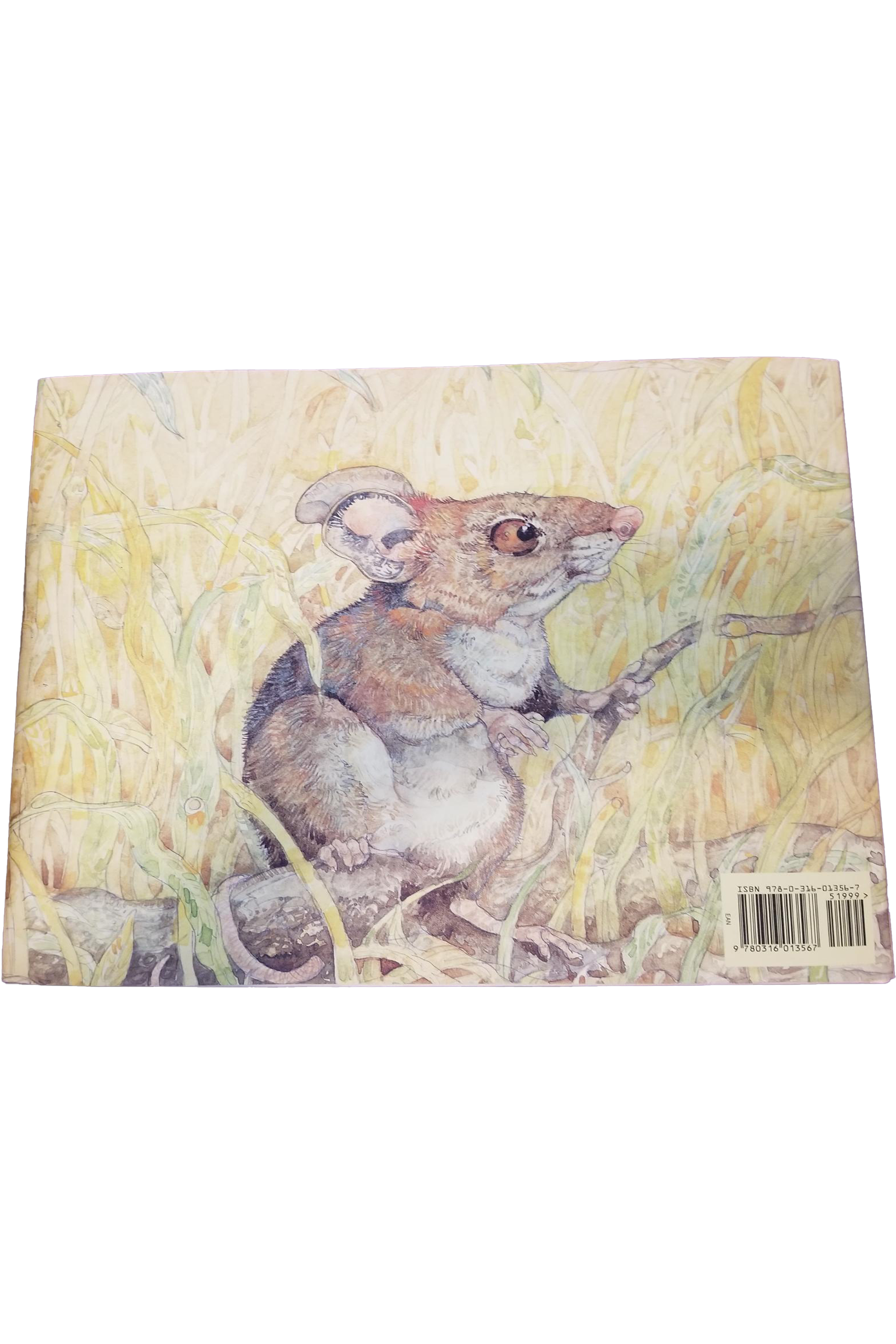 Image 1 of 2
Image 1 of 2

 Image 2 of 2
Image 2 of 2



The Lion & the Mouse
Author and Illustrator: Jerry Pinkney
Published: 2009
This book is my absolute favorite adaptation of Aesop’s famous tale. The Lion and the Mouse story was narrated a long time before it was written. Aesop is first credited with telling this story sometime between 620 and 560 years BC, but the story was most likely told for many years before that. Aesop’s vocation was as a “fabulist” which is someone who composes or relates fables, basically a professional storyteller. So, Aesop most likely told this story as opposed to write this story. In any case, it’s a classic and beautiful story about two different species of animals who learn to help one another to survive.
Jerry Pinkney was an American writer and illustrator of children’s books. He received a Caldecott Medal for this book and rightly so.
There are no words in this book except for the sounds of some of the animals. So, you don’t need to be able to read to understand the story. And when you ‘read’ this story with a child you don’t say any words, only mimic some animal sounds, for example “Grrr”.
The story is completely told via the artwork. And the artwork is exquisite! Color fills every page. Each page is like its own beautiful watercolor painting. There is incredible detail to everything on the page: the color of the sky, the texture of the rocks and trees, and of course, the particulars of the animals themselves and especially the expressions on their faces.
Every page of this book is like a scene in a play and even though there are no words, it takes a little time to take in all the details. This is a wonderful way to engage a child’s higher thought process (or a grownup’s for that matter). It’s the ultimate ‘imagination’ reader (where we have children look at the pictures and ‘imagine’ what the story is about). Your mind must take in all that it sees on the page and deduce what is happening in the story.
The suggested age range for this book is 2 to 5 years old. I personally think that that the age range should be a little bit higher (depending on the child of course). When I read this book with four-year-olds, I had to prod them a little bit to think about and interpret what was happening in the book. (Keep in mind that these kids hadn’t heard the story before.) For younger kids, I would imagine that you would need to point out some details and discuss each page in order for the child to follow it.
One other note about this book… there was a boy in my class who was autistic. I don’t know much about autism personally (I need to learn more) nor do I know much about his particular condition. He was non-verbal. He understood what you said but he didn’t speak himself. He never wanted to read with me, but he loves books. While I was reading with other students, he would sit nearby with a book in his own hands pretending to read. So, I started bringing books for him to ‘read’ on his own. Most days he would look at the book for a minute or so and then set it aside. But the day I gave him The Lion and the Mouse, it kept his interest for a long time, maybe 20 minutes or more. In my limited experience, this may be a wonderful book for other children that are non-verbal. I’ll be sure to try this book again in a similar situation and report back. I’d also love to hear about your experiences with children with autism and which books or techniques worked well for them.
Author and Illustrator: Jerry Pinkney
Published: 2009
This book is my absolute favorite adaptation of Aesop’s famous tale. The Lion and the Mouse story was narrated a long time before it was written. Aesop is first credited with telling this story sometime between 620 and 560 years BC, but the story was most likely told for many years before that. Aesop’s vocation was as a “fabulist” which is someone who composes or relates fables, basically a professional storyteller. So, Aesop most likely told this story as opposed to write this story. In any case, it’s a classic and beautiful story about two different species of animals who learn to help one another to survive.
Jerry Pinkney was an American writer and illustrator of children’s books. He received a Caldecott Medal for this book and rightly so.
There are no words in this book except for the sounds of some of the animals. So, you don’t need to be able to read to understand the story. And when you ‘read’ this story with a child you don’t say any words, only mimic some animal sounds, for example “Grrr”.
The story is completely told via the artwork. And the artwork is exquisite! Color fills every page. Each page is like its own beautiful watercolor painting. There is incredible detail to everything on the page: the color of the sky, the texture of the rocks and trees, and of course, the particulars of the animals themselves and especially the expressions on their faces.
Every page of this book is like a scene in a play and even though there are no words, it takes a little time to take in all the details. This is a wonderful way to engage a child’s higher thought process (or a grownup’s for that matter). It’s the ultimate ‘imagination’ reader (where we have children look at the pictures and ‘imagine’ what the story is about). Your mind must take in all that it sees on the page and deduce what is happening in the story.
The suggested age range for this book is 2 to 5 years old. I personally think that that the age range should be a little bit higher (depending on the child of course). When I read this book with four-year-olds, I had to prod them a little bit to think about and interpret what was happening in the book. (Keep in mind that these kids hadn’t heard the story before.) For younger kids, I would imagine that you would need to point out some details and discuss each page in order for the child to follow it.
One other note about this book… there was a boy in my class who was autistic. I don’t know much about autism personally (I need to learn more) nor do I know much about his particular condition. He was non-verbal. He understood what you said but he didn’t speak himself. He never wanted to read with me, but he loves books. While I was reading with other students, he would sit nearby with a book in his own hands pretending to read. So, I started bringing books for him to ‘read’ on his own. Most days he would look at the book for a minute or so and then set it aside. But the day I gave him The Lion and the Mouse, it kept his interest for a long time, maybe 20 minutes or more. In my limited experience, this may be a wonderful book for other children that are non-verbal. I’ll be sure to try this book again in a similar situation and report back. I’d also love to hear about your experiences with children with autism and which books or techniques worked well for them.
